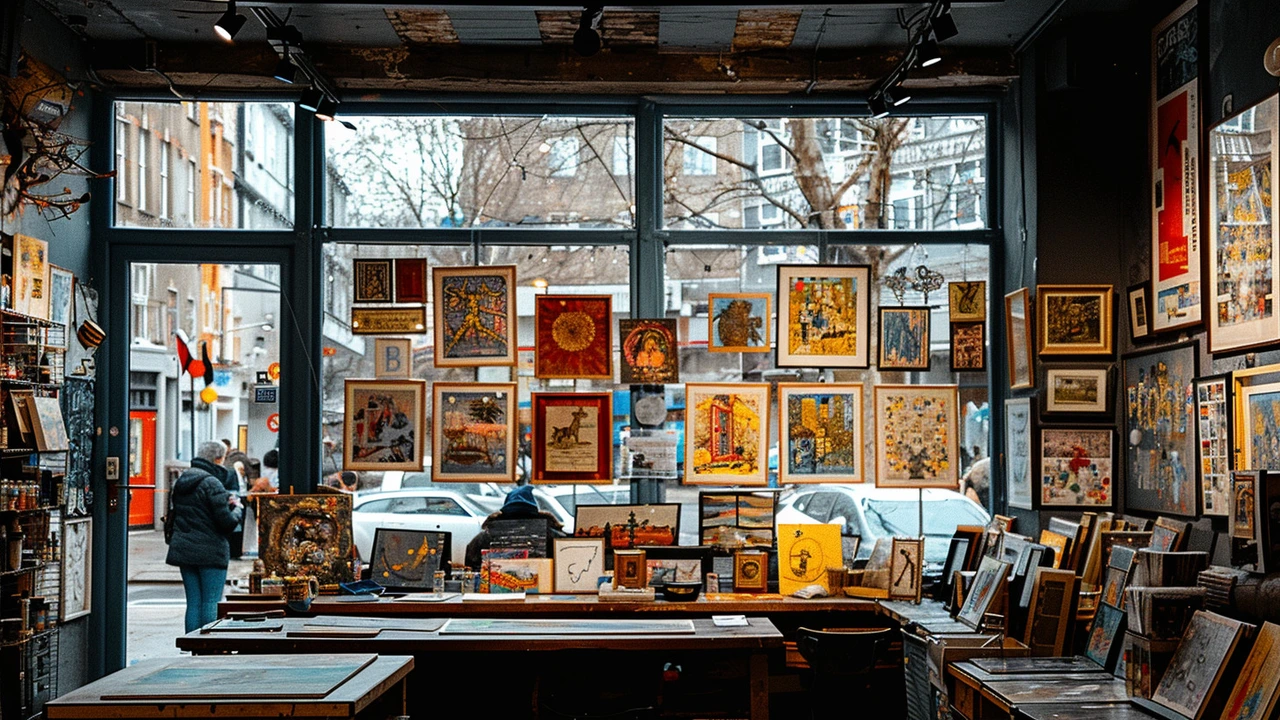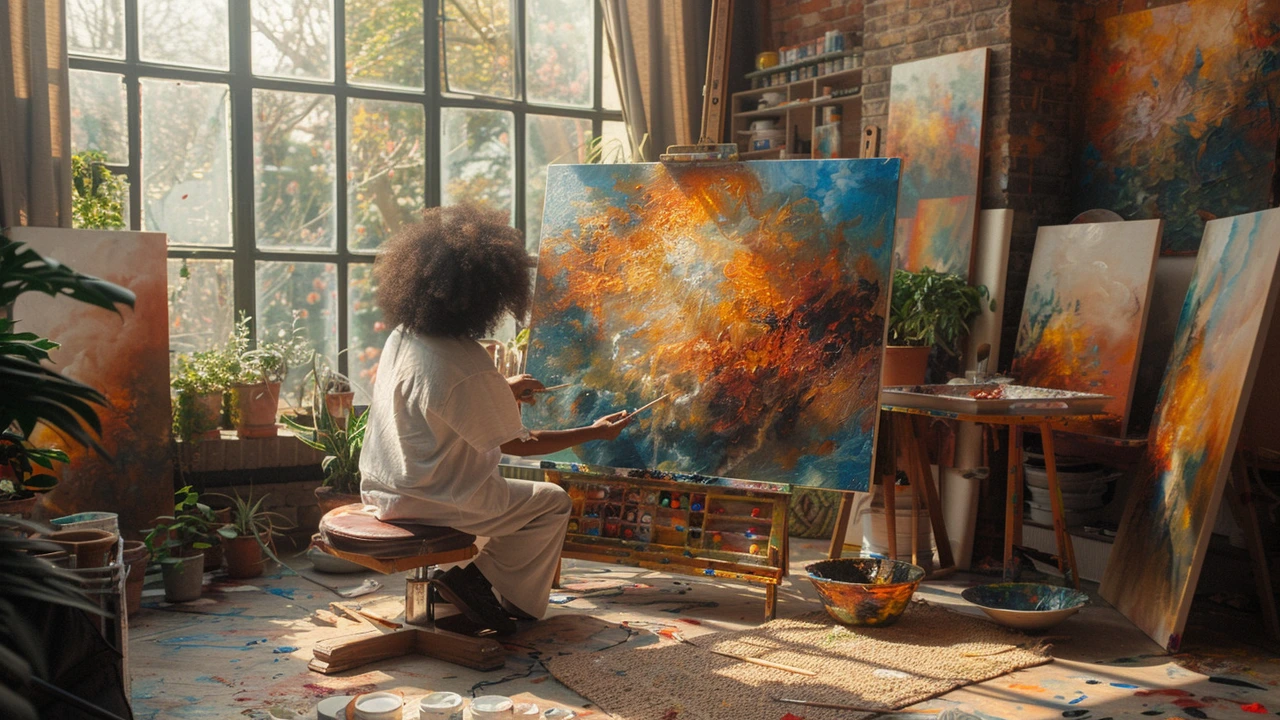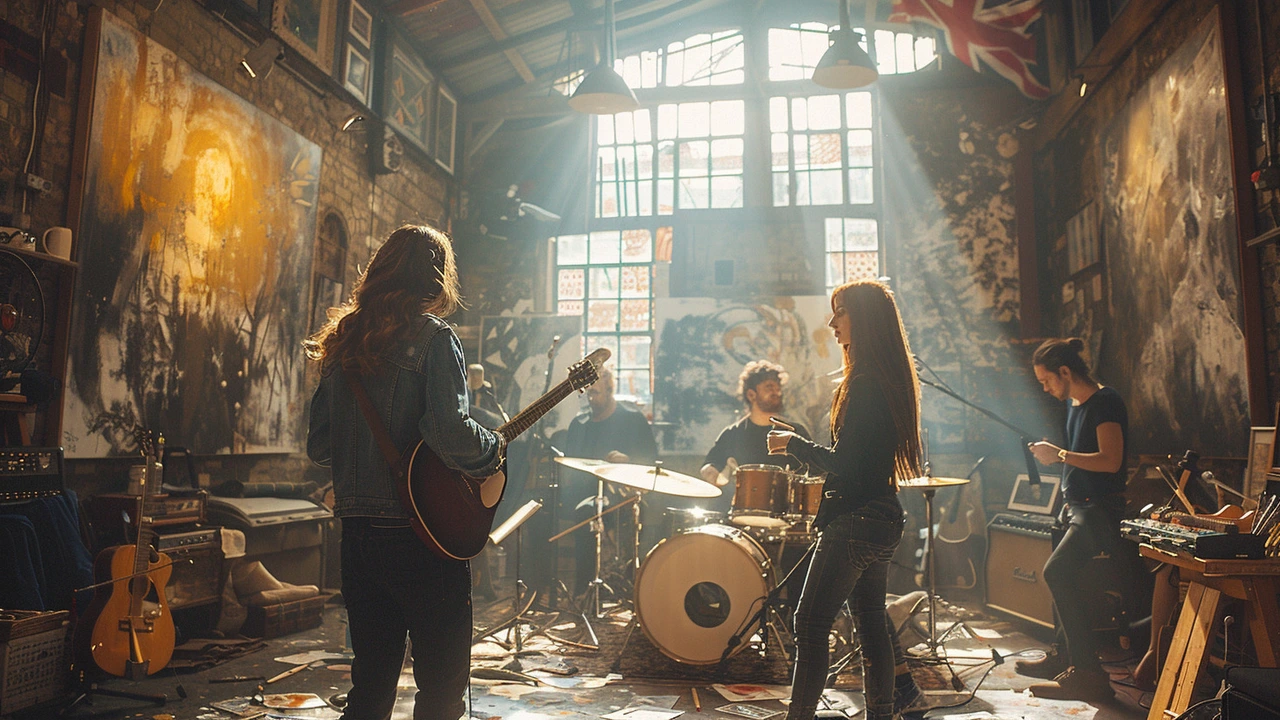
In a world that's often overwhelming, finding solace and healing through creative arts therapies can be a transformative experience. Imagine expressing your deepest emotions not through words, but through the strokes of a paintbrush, the rhythm of a drum, or the graceful movements of dance.
Creative arts therapies encompass a range of activities that harness the power of art to promote mental and emotional well-being. From painting and sculpture to music and dance, these therapies offer a unique way to explore and express our inner world.
But how exactly do these artistic practices help in healing and personal growth? And more importantly, how can you integrate them into your daily routine to unleash your potential?
- The Power of Art in Healing
- Different Forms of Creative Arts Therapies
- The Science Behind Creative Healing
- Practical Tips to Incorporate Arts into Your Life
The Power of Art in Healing
Art has been a fundamental part of human culture for millennia, serving not just as a method of expression but also as a therapeutic tool. The healing potential of art is enormous. It engages the mind, stimulates the emotions, and fosters a sense of inner peace. When we create or even just view art, we can experience a profound sense of relaxation and relief from stress. It's a form of therapy that transcends language barriers, allowing us to communicate our deepest thoughts and feelings without uttering a single word.
Studies have shown that engaging in artistic activities can significantly reduce levels of the stress hormone cortisol. By lowering stress, art contributes to better overall health and well-being. In fact, art therapy has been successfully used to help people with conditions like PTSD, anxiety, and depression. Engaging in creative activities can lead to improved mood, increased self-esteem, and enhanced communication skills.
One notable example of the therapeutic power of art is its use in treating trauma. Through the creation of art, individuals can process traumatic experiences in a safe and supportive environment. The act of creating offers a way to externalize and understand difficult emotions, paving the way for healing and recovery. This is particularly important for individuals who find it challenging to verbalize their experiences.
“Art enables us to find ourselves and lose ourselves at the same time.” — Thomas Merton
For children, art therapy provides a non-threatening way to express their feelings. It allows them to use colors and shapes to communicate things they may not yet have the words to describe. For adults, engaging in artistic activities can reignite the creative spark that might have been dimmed by the pressures of daily life. The process of creating art can bring joy, a sense of achievement, and fulfillment.
Beyond individual benefits, art also has the power to strengthen communities. Community art projects can bring people together, fostering a sense of belonging and unity. Whether it's a neighborhood mural, a collaborative sculpture, or a group art class, these activities help build connections and promote a sense of shared purpose. Feeling connected to others can greatly enhance one’s mental and emotional well-being.
Medical professionals are increasingly recognizing the value of art in healing. Hospitals and clinics are incorporating art programs to improve patient outcomes. For instance, some hospitals have art galleries, offer painting classes, or include art-making supplies in patient lounges. These initiatives help create a more comforting and healing environment for patients and their families.
Art can be a powerful ally in healing, offering a way to express, process, and transform pain into something beautiful. Whether you're picking up a brush for the first time or revisiting a long-lost passion, embracing the arts can unlock pathways to emotional and physical well-being. So, don't hesitate to dive into the world of colors, shapes, and melodies. Your journey to healing might just begin with a simple, yet profound stroke of creativity.

Different Forms of Creative Arts Therapies
Creative arts therapies come in various forms, each offering unique ways to explore and express our feelings and inner thoughts. One of the most popular forms is **art therapy**. This involves using visual art materials like paints, chalks, or clay to create objects that help express emotions that might be difficult to put into words. Art therapy sessions often involve both the creation process and a reflective phase where the artwork is discussed. It can help with improving self-esteem, managing stress, and enhancing cognitive abilities.
**Music therapy** is another well-known form. It uses music to address physical, emotional, cognitive, and social needs of individuals. Through activities like listening to music, writing songs, or playing instruments, people can express feelings and experiences in a non-verbal way. Music therapy has been shown to reduce anxiety, improve mood, and even boost memory in patients with Alzheimer's disease. As the American Music Therapy Association puts it, music therapy is a “powerful and non-threatening medium” that helps individuals of all ages and abilities.
**Dance/movement therapy** focuses on the connection between the body and mind, using dance and movement to promote emotional, social, cognitive, and physical integration. Through guided movements and dance activities, participants can relieve stress, improve body image, and enhance their social skills. For instance, a study published in the journal “Psychology of Aesthetics, Creativity, and the Arts” found that dance/movement therapy significantly reduced symptoms of depression and anxiety.
**Drama therapy** leverages the power of drama and theater processes to achieve therapeutic goals. By participating in role play, storytelling, and performance, individuals can explore their personal stories and gain insights into their lives. It's particularly effective in developing social skills and emotional regulation. Drama therapy can offer a safe space for individuals to rehearse new behaviors or understand the perspectives of others.
Lastly, **writing therapy**—or expressive writing—provides a structured way to explore thoughts and feelings through writing. Whether it’s journaling, poetry, or storytelling, writing therapy can help individuals process traumatic events, clarify thoughts, and understand their emotions. James W. Pennebaker, a well-respected psychologist, found through his research that expressive writing could improve immune function and reduce symptoms of depression.
As Judith A. Rubin, a renowned art therapist, once said, "Creative activities don’t just offer an outlet for emotions, but also provide a way to make sense of one’s experiences and gain a sense of control."

The Science Behind Creative Healing
Understanding the science behind creative healing begins with recognizing the profound connection between our mental state and creative expression. When we engage in artistic activities, our brains undergo a series of complex yet beneficial reactions. Neurological studies have shown that activities like painting or playing an instrument stimulate the release of neurotransmitters such as dopamine, which play a crucial role in maintaining mood and reducing anxiety.
One fascinating aspect is how music therapy affects the brain. Listening to or creating music can engage multiple areas across the brain, including those responsible for motor movements, emotions, and creativity. This multisensory engagement can significantly benefit individuals suffering from neurological disorders or trauma. A study published in the journal Frontiers in Psychology highlights how music therapy led to a notable decrease in symptoms for patients with depression and PTSD.
Art therapy, on the other hand, involves using various art forms to express emotions that might be difficult to verbalize. This form of therapy leverages the brain's ability to process visual information and link it to emotional centers. Research from the American Art Therapy Association indicates that art therapy helps in fostering self-awareness and emotional resilience, especially in children and adolescents dealing with emotional challenges.
Dance therapy combines movement with emotional expression, benefiting not only the mind but the body as well. The physical activity involved in dance helps release endorphins, which are natural mood lifters. Additionally, dance therapy improves self-esteem and social interaction, which can be especially beneficial for elderly individuals. A study conducted by the International Journal of Nursing Studies found that elderly participants engaging in dance therapy showed improvements in physical health and cognitive functions.
Expressing oneself through creative arts also helps in regulating stress hormones. Cortisol, a hormone released in response to stress, can be effectively managed through regular artistic activities. When individuals partake in creative endeavors, they often enter a 'flow state,' characterized by deep enjoyment and full immersion in the activity. This flow state can significantly lower cortisol levels, leading to reduced stress and improved emotional balance.
As the renowned psychiatrist Dr. Cathy Malchiodi puts it, 'Art therapy enables individuals to find a voice for their inner experiences and a path to healing that conventional talk therapies may not provide.'
Research has consistently shown the diverse ways creative arts therapies can impact our mental and emotional health. The scientific community continues to explore these benefits through rigorous studies, making it clear that incorporating art into our daily lives can have profound and lasting positive effects. Whether through painting, music, or dance, the ability to express oneself creatively is not just a hobby, but a crucial tool for emotional and psychological well-being.

Practical Tips to Incorporate Arts into Your Life
Integrating creative arts into your everyday life doesn't have to be overwhelming or time-consuming. You can begin with small, manageable steps that fit seamlessly into your routine. One excellent starting point is to dedicate a quiet corner in your home as your 'creative space.' This doesn't need to be elaborate—a simple table and a few art supplies can work wonders. Here, you can let your creativity flow without distractions.
Another easy way to start is by keeping a sketchbook or a journal. Take a few moments each day to doodle or jot down your thoughts and feelings. It’s not about creating a masterpiece but about the process of expressing yourself. Did you know that just 45 minutes of art-making has been shown to significantly reduce stress hormones? This means even brief, regular creative breaks can have lasting positive effects on your emotional well-being.
Listening to music is another excellent form of creative therapy. Make a playlist of your favorite tunes and allow yourself to get lost in the music. Whether you choose to dance, hum along, or simply listen, music can elevate your mood and help you process emotions. Research has shown that listening to music releases dopamine, the 'feel-good' hormone, which can enhance overall happiness.
For those who enjoy a more structured approach, taking a class in painting, pottery, or dance can be incredibly rewarding. Many community centers offer affordable classes where you can learn new skills and meet like-minded individuals. Being part of a creative community can provide support and motivation, making it easier to stick with your artistic endeavors.
"The purpose of art is washing the dust of daily life off our souls," said Pablo Picasso. His words beautifully capture the essence of why incorporating art into your life is so powerful.
If you prefer a more meditative approach, consider trying out activities like mandala coloring or zen doodling. These practices are not only relaxing but can also improve focus and mindfulness. They require minimal materials and can be done anywhere, making them a convenient option for busy individuals.
Don't overlook the power of combining art with nature. Take your sketchbook to a local park, or try your hand at creating art with natural materials such as leaves, stones, or flowers. Being outdoors can boost creativity and provide fresh inspiration.
Finally, make a habit of visiting art galleries or attending cultural events. Exposure to different forms of art can open your mind to new possibilities and inspire your own creative projects. If visiting in person isn't feasible, virtual tours and online exhibitions are excellent alternatives.
In summary, the key to successfully incorporating creative arts into your life lies in consistency and openness to exploration. Start small, stay curious, and most importantly, enjoy the journey of creative discovery. Whether it’s through drawing, music, dance, or any other form of artistic expression, the therapeutic benefits are immense and well worth the effort.
